Posted on 14 February 2018
Blog: Lana Young from RV Polaris II (week 1)
- News
- Dynamic Seas Tasman/Te Tai-o-Aorere Nelson/Whakatū Marlborough/Te Tauihu-o-te-waka Canterbury/Waitaha Otago/Ōtākou
- 7 Minutes to read
Lana, a student at the University of Otago, reports on life at sea and the fieldwork being done for our Ecosystem Connectivity project. This is her first research voyage.
7 February: All aboard
With all our gear on board we were set to go! Full steam ahead, we left dry land in Dunedin. Over the next 3 weeks our adventures will take us all the way up to the Malborough Sounds and Tasman Bay, where we will collect all the data a marine scientist could ever want… Well not quite, but we have a chocker plan to collect as much info as we can for our PhD, MSc and Honours scientists on board.
With a lot of water to cover, our first day was a great opportunity for us to find our sea legs as we made our way to Akaroa. Just as the sun was setting, we were visited by some Dusky dolphins riding on the bow, this never gets old! Leaving our progress in the trusty hands of our crew Bill and Evan, we climbed into our bunks feeling a little like pirates looking for treasure.
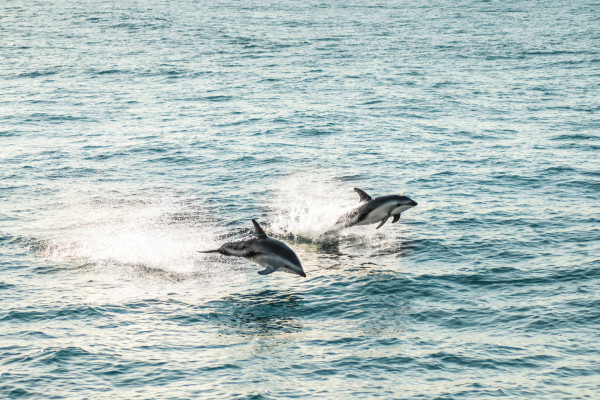
8 February: Fishing for water
It’s easy to think of the ocean as a big ol’ pond of salty cold water, but in fact there is huge variation in all sorts of things like temperature, nutrients and salinity with both depth and distance. These factors combine to create different environments ideal for a range of marine species.
It was a full day of fishing for water for Leo – his research is looking at the isospace (landscape of isotopes) in the sub-antarctic waters off New Zealand. How do you fish for water? We motored from the coastline near Akaroa straight out for about 120km, and at a few locations along the way dropped a CTD cast over the side.
This nifty tool allows us to measure the salinity, temperature, depth, fluorescence and oxygen in the water all the way down to 500m, and is a great way to help Leo get context for his water samples. Attached to the CTD are bottles which are open at either end, and when we send a signal down the line they snap closed! We capture little pockets of water from various depths and then can filter the water through fancy pieces of machinery to find out about the nitrogen and carbon isotopes in them.
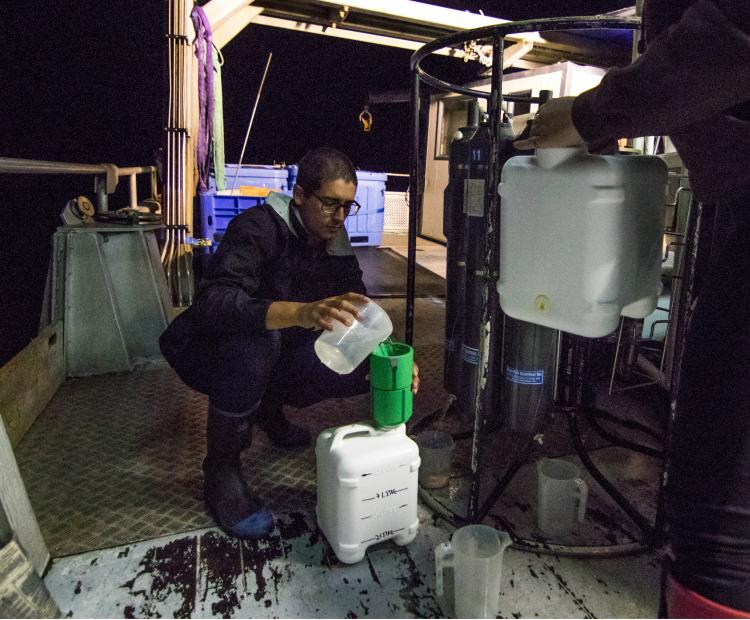
Collecting CTD water samples - marine science happens day and night.
9 February: Crazy little alien stuff
2am... work started early for Charlotte today! The ocean is full of plankton, a collective term for many of the tiny floaties in the water. It includes invertebrate larvae, small animals like jellyfish and salp, and tiny fish – affectionately described by Charlotte “crazy little alien stuff” due to the huge variety of life forms.
Although not fully understood, it’s widely thought that plankton like to hide in the dark depths of the ocean during the day to avoid being seen by predators on the surface like fish and seabirds. At night the “crazy little aliens” move on mass to the surface to feed in the nutrient rich waters. This ‘vertical migration’ means you get a really different collection of plankton at the surface between night and day. Charlotte studies how these communities vary by collecting plankton from the surface in the same spots in the sea at day and night.
After some early morning sampling we were off on the long overnight journey to Kaikoura. A little physics lesson: boats with rounded hulls love to dance, and their favourite is rock ‘n’ roll. Needless to say, cocooned in the safety of our bunks is where we stayed for most of the morning until the sea became a little more cooperative and we could emerge upstairs. With the weather still not working in our favour we decided to stay for the night sheltered behind the Kiakoura peninsula where, despite calm waters, we still danced all night.
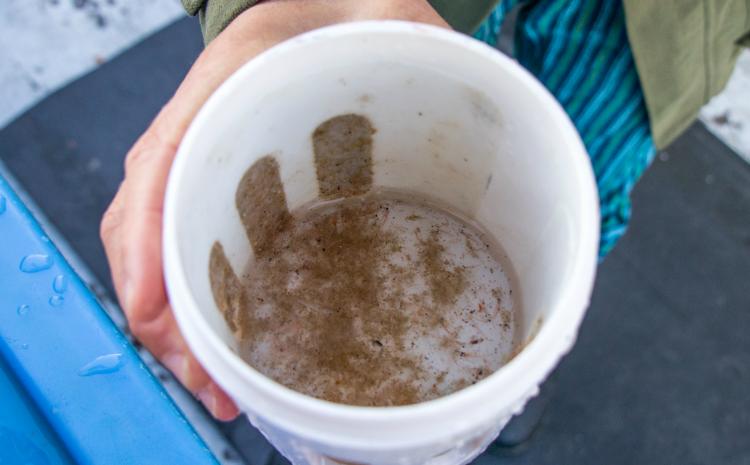
This may look like sludge, but it's full of plankton that's been collected by a towed net.
10 February: Silent night
Today was another day of travelling and not much to report except our arrival into Malborough Sounds. The glassy calm waters were a welcome break from the steady rock that we’ve become used to over the last few days.
On the way we dropped some lines over the side to catch blue cod which Leo is also using for his research. This was a great opportunity for us all to stretch our legs after being cooped up inside with the bad weather we’ve had the last few days. Everyone managed to catch a fish – a great team effort! We slept in the calm waters of Port Underwood with the motor off – luxury.
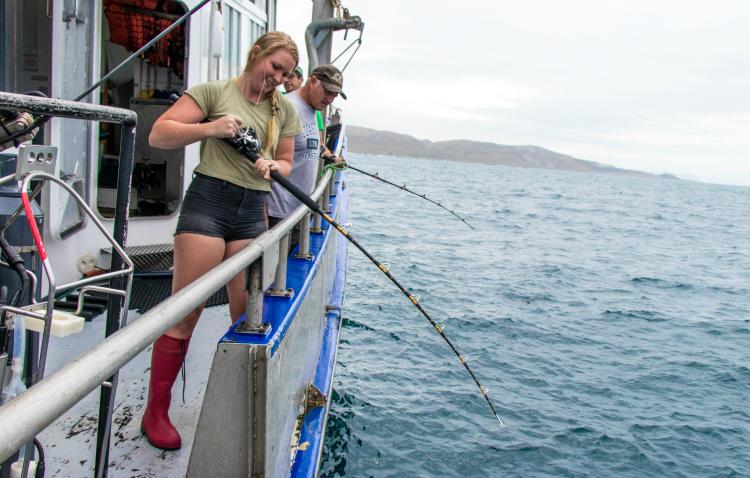
11 February: Panning for gold
Gold for a marine scientist is data! Rebecca, who is looking at the invertebrate communities throughout the Malborough Sounds, did her first collection of little critters today and we had great fun sorting through and counting the jumble of shells, inverts and many many many brittle stars. Our most exciting finds were a seahorse, baby octopus and beautiful flame shells. Such a diversity of life in such a small space makes you wonder how much more there is out there.
Another highlight today was going for our first two dives, and we all enjoyed getting under the surface for a look around. Stina’s research, which looks the links between habitat use in different life stages of fish, got us putting our memory into practise, identifying all the invertebrates, fish and seaweed that were along our research routes.
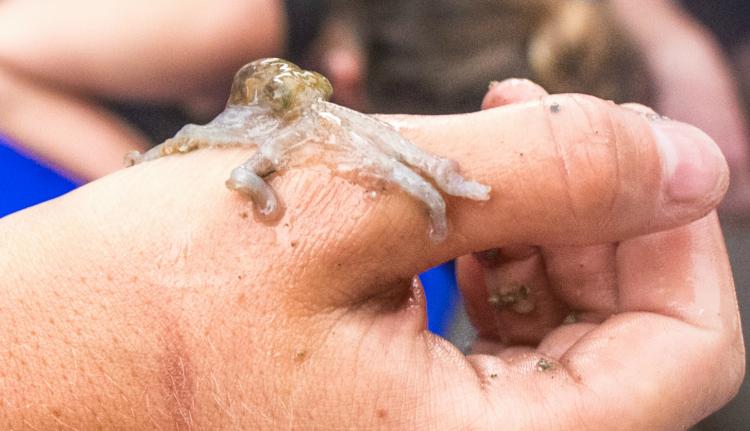
12 February: Supervised by a seal
Whenever you delve into the underwater environment it’s always humbling to remember that you’re peeking into a world that isn’t yours.
Some of our underwater friends are just as curious about us as we are them. Malborough Sounds is home to many salmon farms, and where you get salmon farms you also get many hopeful seals lurking around – primed to catch escapees. When we jumped into the water one of the seals hung around and took a good look at what we were doing. I wonder what she thought of us laying out our tape measures and quadrats along the sea floor!
We’re really getting into the routine of an early morning jump into the water to go about our research. Being much further north that Dunedin we’re loving the warmer water and sunshine, which gives our wetsuits a chance to dry out.
Being on the boat for almost three weeks, you don’t get a lot of opportunity to really stretch your limbs, go for long walks, run, bike or any other normal activity that you usually take for granted. This evening a few of us jumped in the water for a quick swim to shore. Even though we were perched on the rocks for just a short while it definitely felt weird having feet on solid ground and being so still.
13 February: Octopus babies
During each of our research dives we collect a few bivalves that we find along the way, which Sorrel, Clara and Rebecca can use in their research back at the lab in Dunedin. Sorting and cleaning the shells on the boat we found one of them was no longer was home to a horse mussel – a midget octopus had taken residence and she was protecting eggs!
Temperature change can cause octopus eggs to spawn early – before we knew it we were all proud parents to hundreds of tiny baby octopus swimming around in the bucket. After a quick phone call to our octopus researcher friend we took a few samples and set our babies free in the water.